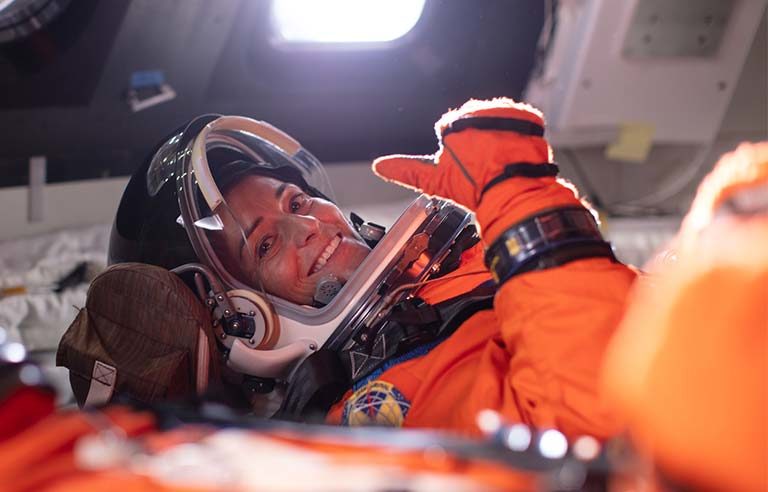National Academies recommends NASA update radiation exposure limits for astronauts

Washington — To protect the health and safety of astronauts, NASA should proceed with its proposals to set a universal careerlong radiation dose limit – regardless of age or gender – and improve its system for communicating cancer risks, a recently released report from the National Academies of Sciences, Engineering and Medicine recommends.
According to the report – prepared by an ad hoc committee of the National Academies at NASA’s request – a limit of about 600 millisieverts would protect astronauts during space travel, which exposes the human body to higher levels of ionizing radiation than on Earth. That radiation can lead to long-term health issues such as cancer, cataracts and heart problems.
The committee recommends NASA proceed with its proposed single standard dose limit for all astronauts, which is based on “risk of exposure-induced death” calculations for a 35-year-old female – “who is considered most susceptible to various radiation-induced cancers,” a National Academies press release notes. Currently, the space agency uses a 3% REID calculation to set the limit. The report recommends NASA conduct an independent analysis to study an acceptable risk limit.
Presently, male and female astronauts have different allowable radiation doses, which are based on their reported relative susceptibilities to different cancers induced by radiation. Under the current standards, female astronauts can fly fewer days in space because they reach radiation limits sooner than their male counterparts.
The committee recommends NASA communicate a comprehensive picture of each astronaut’s cancer risk, modify its current “traffic light” color-coded system and discuss changes in radiation risks as part of routine health briefings.
According to the release, the timing is right for NASA to move forward with these changes because the agency is preparing for its Artemis lunar missions, along with longer trips to Mars.
“NASA should continually strive to base its standards on the best available science as it embarks on this new phase of space travel and exploration,” committee chair Hedvig Hricak, who also serves as chair of the department of radiology at the Memorial Sloan Kettering Cancer Center in New York, said in the release. “As science on radiation-related cancer risks is constantly evolving, NASA has an important opportunity to revisit its space radiation health standard. We hope this report will guide NASA in protecting the health of astronauts throughout their careers.”
Post a comment to this article
Safety+Health welcomes comments that promote respectful dialogue. Please stay on topic. Comments that contain personal attacks, profanity or abusive language – or those aggressively promoting products or services – will be removed. We reserve the right to determine which comments violate our comment policy. (Anonymous comments are welcome; merely skip the “name” field in the comment box. An email address is required but will not be included with your comment.)

